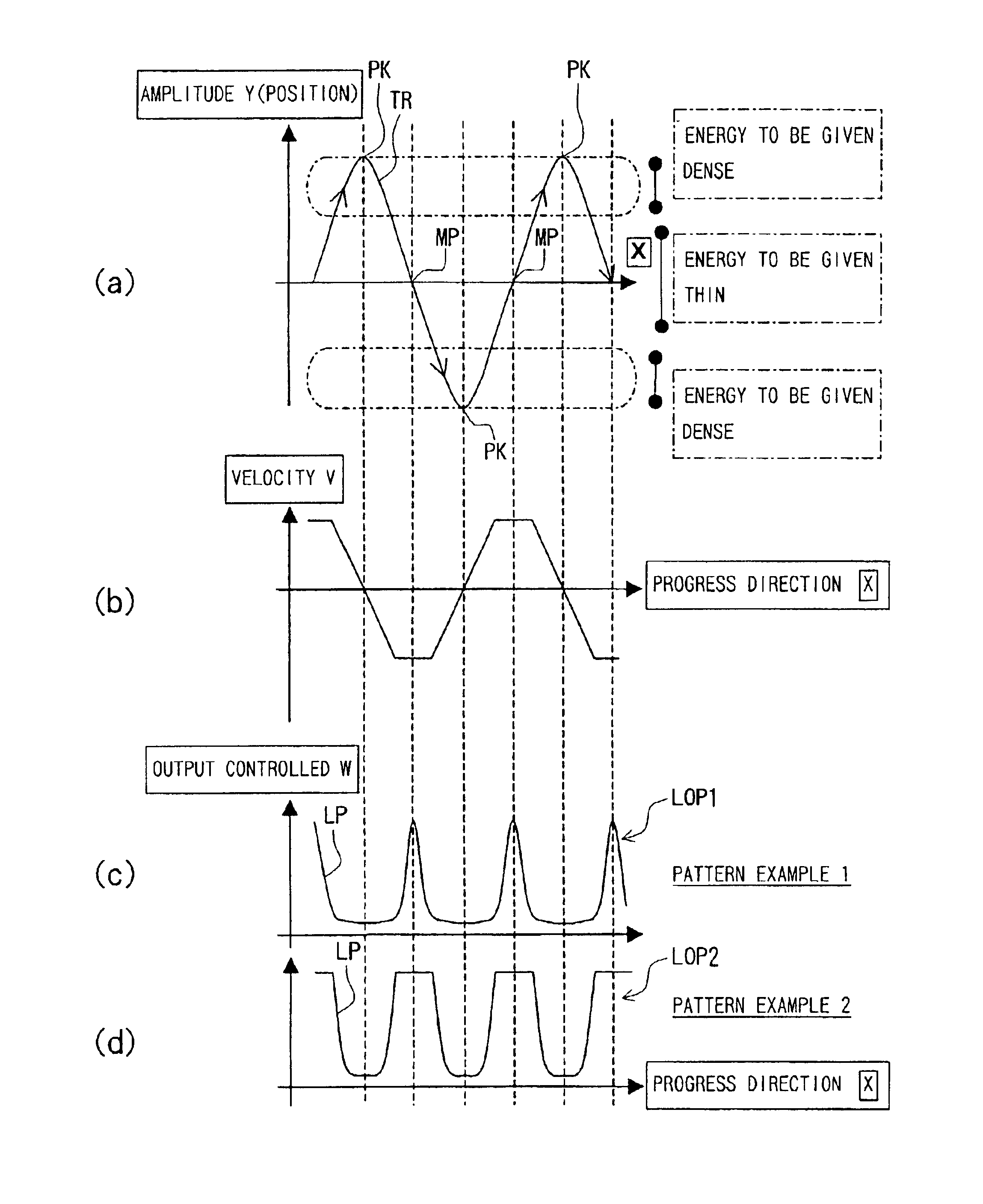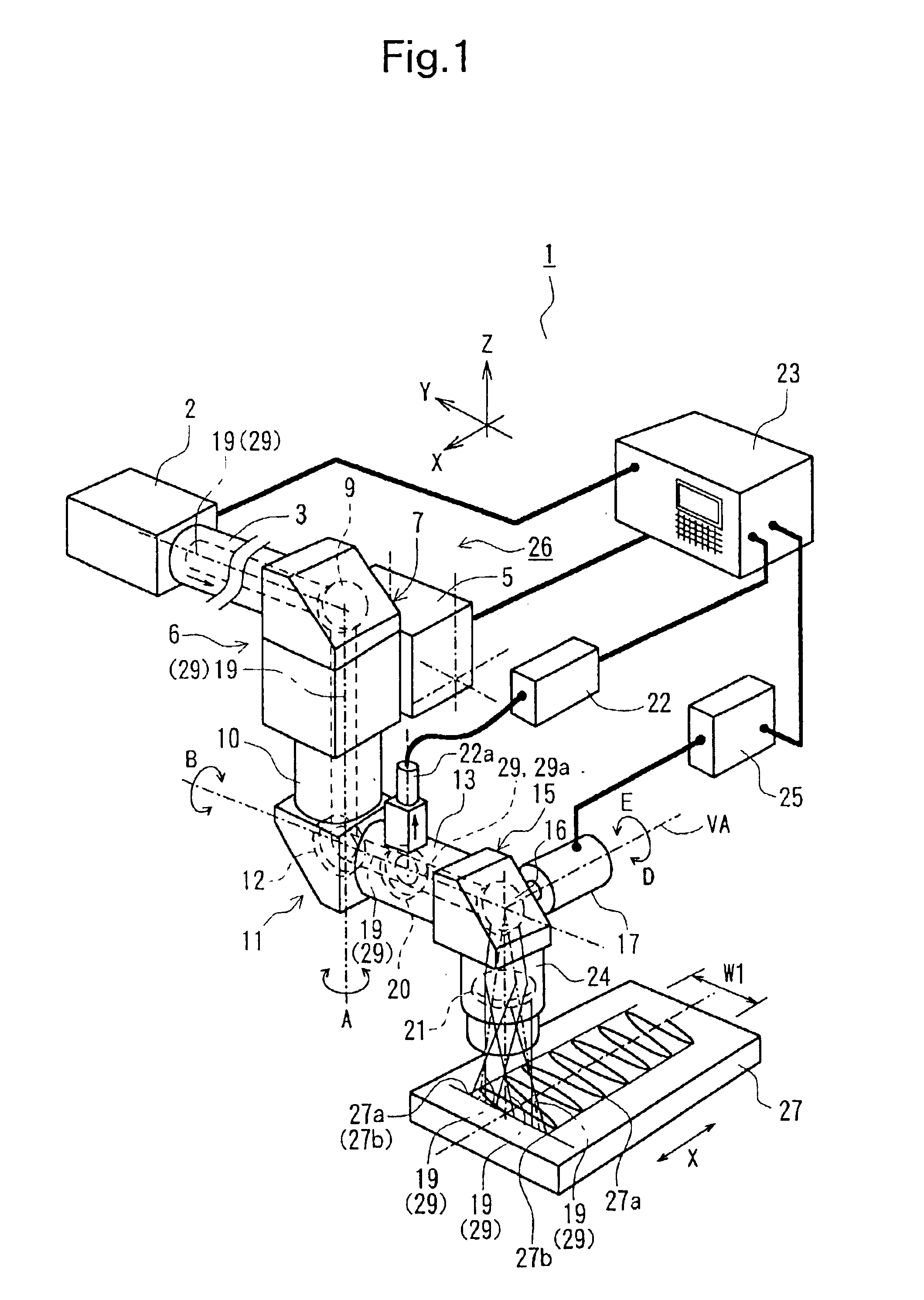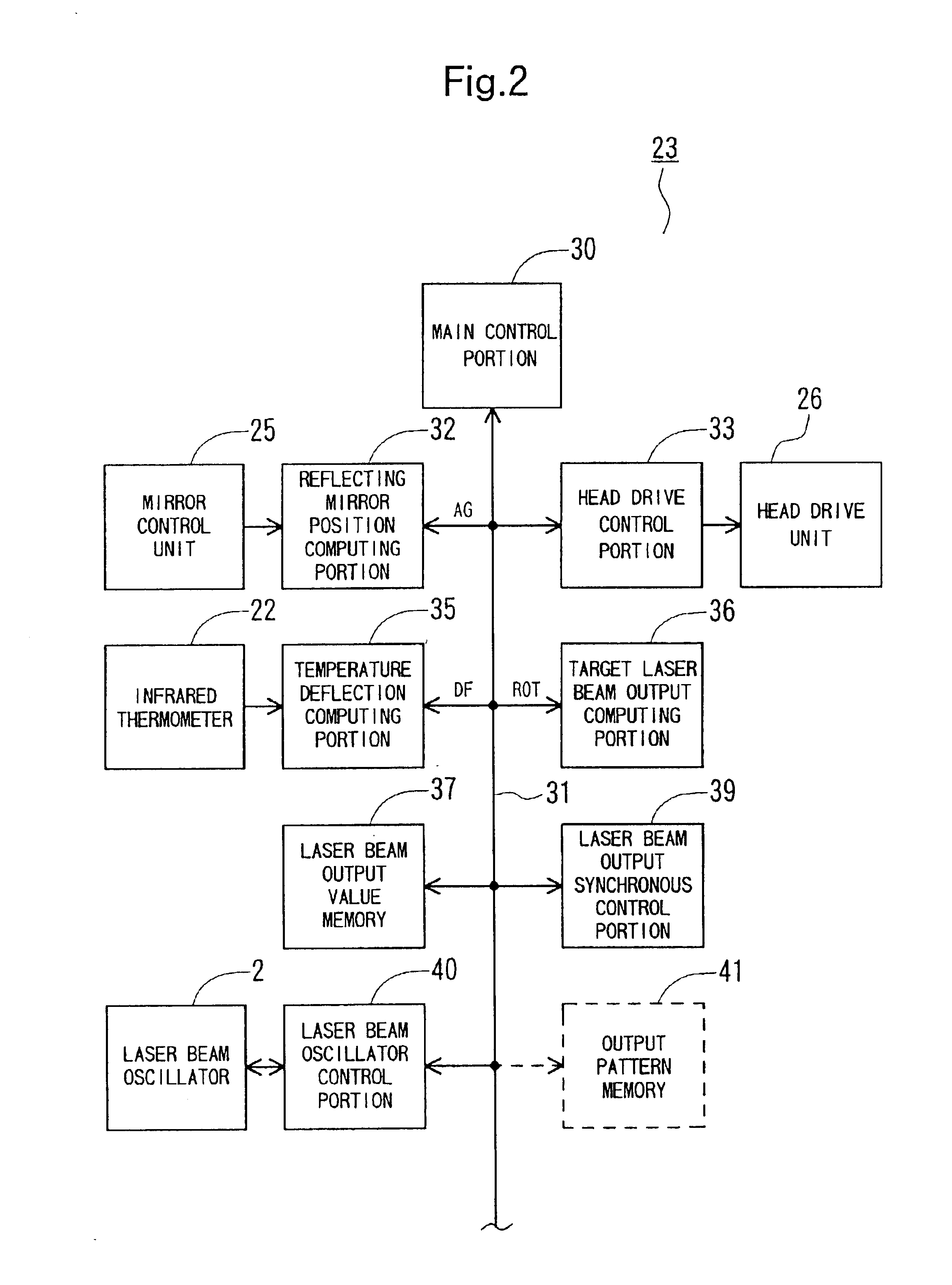Method of controlling hardening with laser beam and laser beam hardening device
- Summary
- Abstract
- Description
- Claims
- Application Information
AI Technical Summary
Benefits of technology
Problems solved by technology
Method used
Image
Examples
Embodiment Construction
[0057]Embodiments of the invention are explained hereinafter with reference to the accompanying drawings.
[0058]FIG. 1 is a schematic perspective view showing elements of a laser beam hardening device to which the present invention is applied. FIG. 2 is a block diagram for showing important portions and connections in a numerical-control (NC) version of the unit. FIG. 3 is a schematic view demonstrating a re-circulating laser beam output value memory. FIG. 4 shows an oscillating scanning track over which the laser beam is passed to harden an associated area. FIG. 5 is a schematic view for showing contents of respective data blocks in a laser beam output value memory. FIG. 6 is a series of corresponding time plots wherein (a) shows the scanning track of the laser beam (a full hardening cycle); (b) shows the scan velocity of the laser beam over the workpiece, corresponding to (a); (c) illustrates an exemplary varying laser beam output power pattern for the scan in (a); and (d) shows an...
PUM
| Property | Measurement | Unit |
|---|---|---|
| Temperature | aaaaa | aaaaa |
| Power | aaaaa | aaaaa |
| Energy | aaaaa | aaaaa |
Abstract
Description
Claims
Application Information
 Login to View More
Login to View More - R&D
- Intellectual Property
- Life Sciences
- Materials
- Tech Scout
- Unparalleled Data Quality
- Higher Quality Content
- 60% Fewer Hallucinations
Browse by: Latest US Patents, China's latest patents, Technical Efficacy Thesaurus, Application Domain, Technology Topic, Popular Technical Reports.
© 2025 PatSnap. All rights reserved.Legal|Privacy policy|Modern Slavery Act Transparency Statement|Sitemap|About US| Contact US: help@patsnap.com



